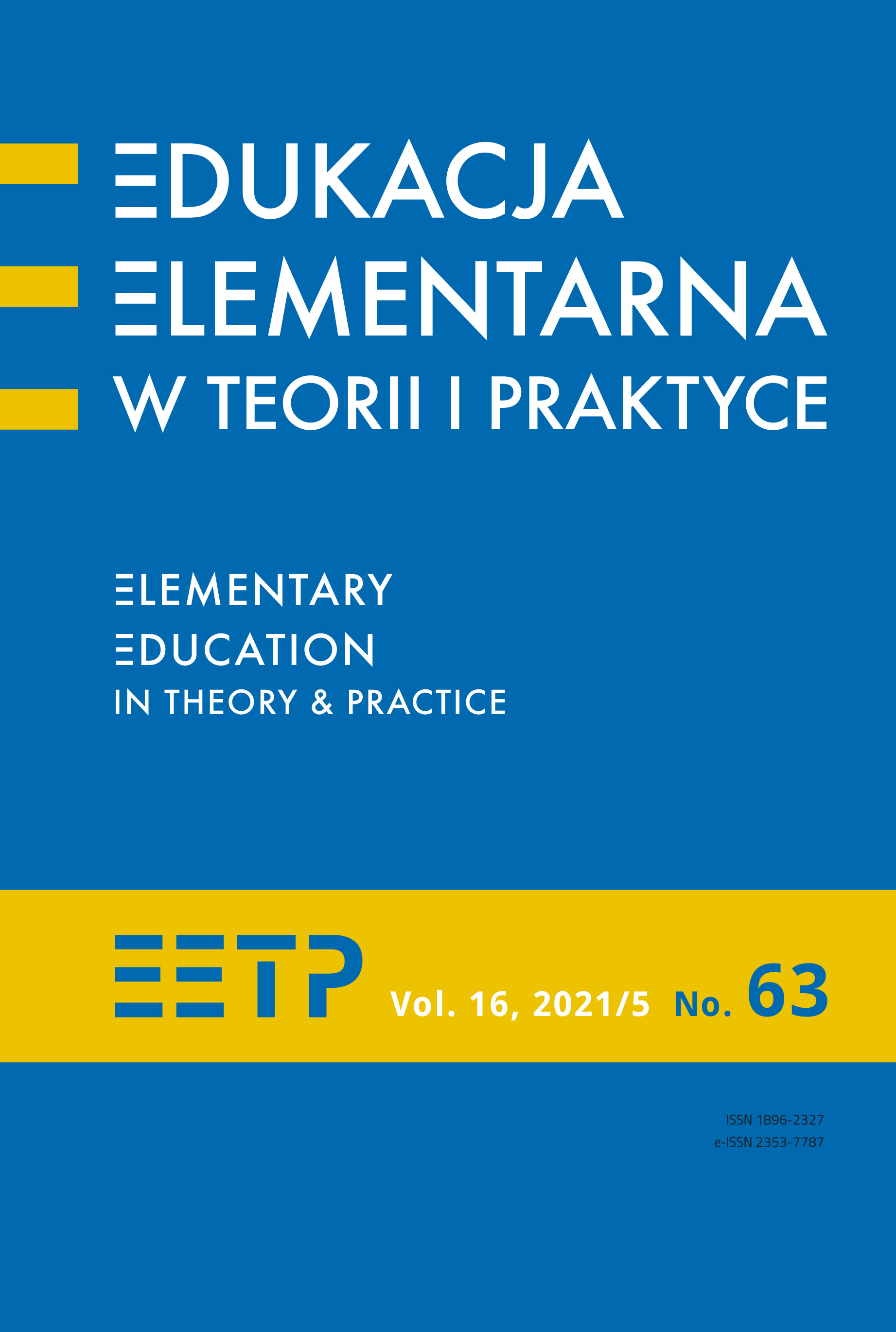Are 6-year Old Children Ready to Read and Write with “Pictures and Patterns. The Developmental Program in Visual Perception” by M. Frostig and D. Horne? A Case Study
Abstract
When starting school, a child has to face various emotional, social and cognitive difficulties. A good preparation for the acquisition of two key competences in early childhood education constitutes a significant half of the child’s successful start at school. Learning to read and write is a complicated process. Therefore, already in the first months of a 6-year-old's kindergarten education, the child undergoes observation concluding with a school readiness test, which provides teachers with a lot of important information about the child's level of visual and auditory perception and fine motor skills, which are necessary for developing reading and writing skills.
The considerations included in this article focus on the extent to which 6-year-old children are ready to learn to write and read. However, the aim of the research was to determine the level of preparation of 6-year-old children in the field of writing and reading. The main research method used in the research was the case study method, which relied on observation. The study included children who were initially diagnosed with low level of visual functions and motor skills development, and thus qualified for corrective and compensatory classes, which took place in the kindergarten. The research was carried out for a period of six months and it was based on work with the project “Pictures and Patterns. The Developmental Program in Visual Perception” by M. Frostig and D. Horne. As the research results suggest, the greatest advances in children were recorded in the area of visual perception and hand-eye coordination.
References
Dobrowolska D. (2015). Metodyka edukacji polonistycznej w okresie wczesnoszkolnym. Podręcznik dla studentów i początkujących nauczycieli, Kraków: Wydawnictwo Impuls.
Frostig M., Horne D. (2012). Wzory i obrazki. Program rozwijający percepcję wzrokową. Poziom podstawowy, Warszawa: Wyd. Pracownia Testów Psychologicznych.
Gutek G. L. (2003). Filozoficzne i ideologiczne podstawy edukacji, Gdańsk: Gdańskie Wydawnictwo Psychologiczne.
Janiszewska B. (2012). Ocena dojrzałości szkolnej, Warszawa: Wydawnictwo Sewenth Sea.
Michalak R., Misiorna E. (2006). Konteksty gotowości szkolnej. Zeszyt 1, Warszawa: Centrum Metodyczne Pomocy Psychologiczno-Pedagogiczne.
Palka S. (2006). Metodologia, Badania, Praktyka pedagogiczna, Gdańsk: Gdańskie Wydawnictwo Psychologiczne.
(por.http://ckpidn.home.pl/nauczyciel/materialy/Doskonalenie%20umiej%C4%99tno%C5%9Bci%20manualnych.pdf [dostęp: 10.11.2021]).
Zielińska E. Metody pracy w przedszkolu. Wskazówki ułatwiające nauczycielom organizowanie i prowadzenie zajęć, https://blizejprzedszkola.pl/szkolenia/filmy#film-11, [dostęp: 08.11.2021].
Copyright (c) 2021 Elementary Education in Theory and Practice

This work is licensed under a Creative Commons Attribution-NoDerivatives 4.0 International License.
- When submitting a text, the author declares that he/she is the Author of the article (hereinafter referred to as the “Work”) and:
- he/she owns the exclusive and unlimited copyright to the Work,
- is entitled to dispose of the copyright to the Work.
Declares that it does not infringe any third party copyrights or legal rights.
Declares that there is no conflict of interest.
2. At the same time, the Author grants the Ignatianum University in Cracowa royalty-free, non-exclusive and territorially unlimited licence to use the Work in the following fields of exploitation:
- recording the Work in a hard copy, as well as on a digital or magnetic medium;
- reproduction of the Work using any technique, without limitation of the number of editions or copies;
- distribution of the Work and its copies on any medium, including marketing, sale, lending, and rental;
- introduction of the Work into a computer memory;
- disseminating the Work in information networks, including in the Internet;
- public performance, exhibition, display, reproduction, broadcasting and re-broadcasting, as well as making the Work available to the public in such a way that everyone can have access to it at a time and place of their own choosing;
- within the scope of dependent rights to the Work, including in particular the right to make necessary changes to the Work resulting from editorial and methodical development, as well as to translate the Work into foreign languages;
The licence is granted from the moment of the transfer of the Work to the Ignatianum University in Cracow. The Ignatianum University in Cracow is entitled to grant further sub-licences to the Work within the scope of the right granted. The licence is time-limited and it is granted for a period of 15 years, starting from the date of its granting.
Authors are permitted and encouraged to publish their text online (e.g. in their institution’s repository or on the institution’s website) before or during the submission process as this may lead to beneficial exchanges, as well as earlier and greater citation of the published text (See The Effect of Open Access). We recommend using any of the following portals of research associations:
- ResearchGate
- SSRN
- Academia.edu
- Selected Works
- Academic Search




